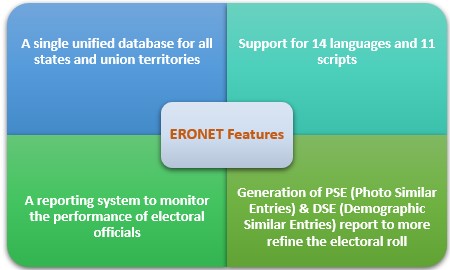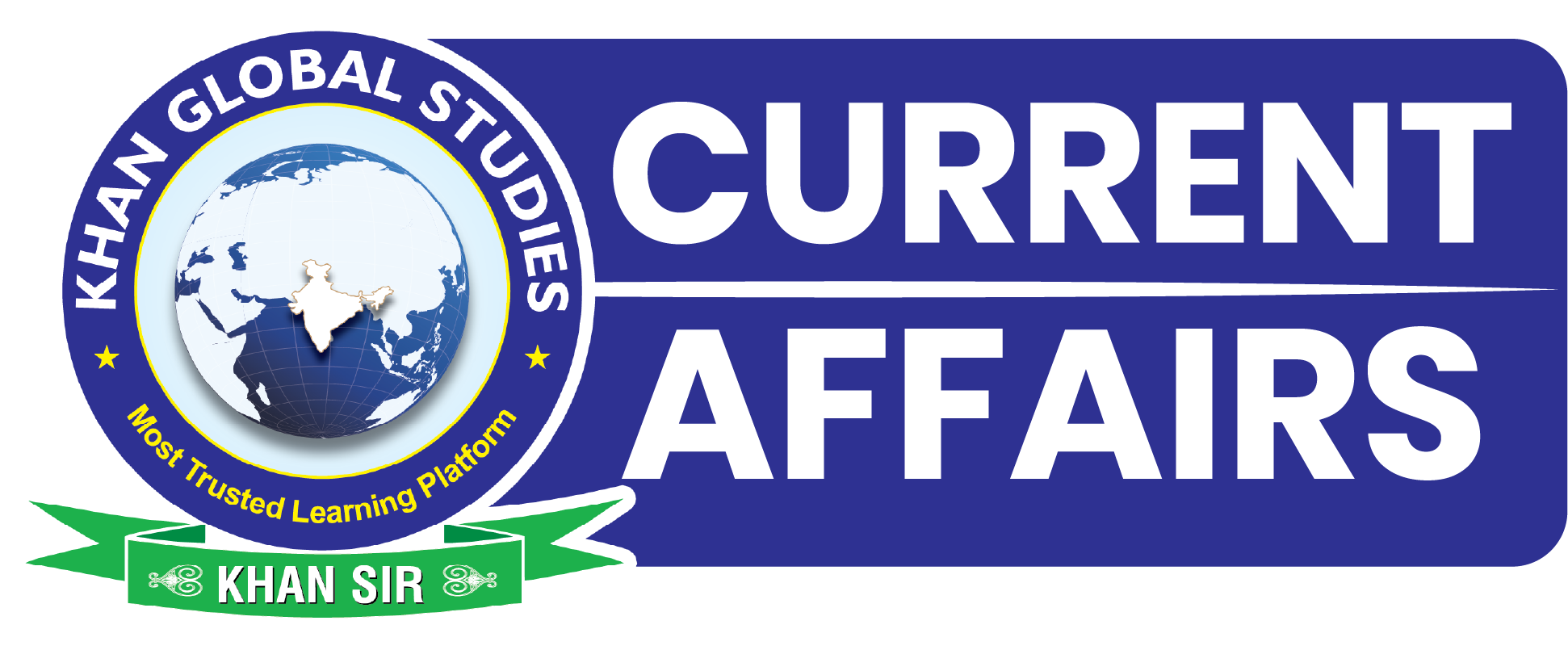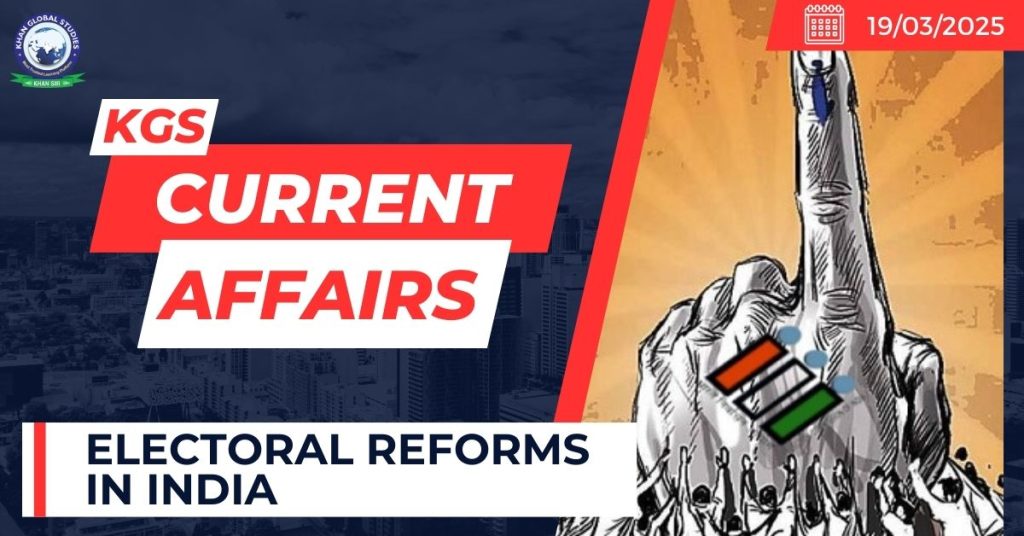Context
- The Election Commission (EC) has invited political parties to discuss strengthening the election process following allegations of electoral roll manipulation and issues with duplicate Electoral Photo Identity Card (EPIC) numbers in the recent assembly elections across various states.
Legal Framework for Elections in India
- Article 324 of the Constitution provides that the superintendence, direction and control of the preparation of electoral rolls for, and the conduct of, all elections to the Parliament and State legislature shall be vested in the EC.
- The preparation of electoral rolls is governed by the provisions of the Representation of the People Act, 1950 and related rules, including Registration of Electors Rules, 1960.
- The Model Code of Conduct (MCC): It outlines guidelines for political parties and candidates during elections.
About the voting process
- The voting process has undergone significant changes since the first general election in 1952.
- In the 1952 and 1957 general elections, a separate box was placed for each candidate with their election symbol.
- Voters had to drop a blank ballot paper into the box of the candidate they wished to vote for.
- From the third general election in 1962, ballot papers with candidate names and symbols were introduced.
- Since the 2004 general elections, Electronic Voting Machines (EVM) have been used in all constituencies.
- Since 2019, EVMs have been supported by 100% Voter Verifiable Paper Audit Trail (VVPAT) slips in all constituencies.
Current Issues
- A series of issues have been raised in the past regarding the voting and counting process.
- First: There were demands through a Public Interest Litigation (PIL) for reverting to paper ballot papers which was dismissed by the Supreme Court in April 2024.
- Second: Another PIL sought 100% matching of VVPAT with EVM counts, but the Supreme Court dismissed this demand as well.
- Third: There were allegations of electoral roll manipulation leading up to the Maharashtra and Delhi Assembly elections.
- Opposition parties accused the ruling party at the Centre of adding a large number of bogus or fake voters to the electoral roll to gain an advantage.
- Fourth: Current issue relates to identical EPIC numbers for voters belonging to different States like West Bengal, Gujarat, Haryana and Punjab.
- The EPIC number is a 10-digit voter ID card number issued by the EC to each voter, it was introduced in 1993.
The EC explained that duplication may have occurred due to the previous decentralized system for allotting EPIC numbers before transitioning to the centralized ERONET platform.

- Other Challenges/Issues
- In addition to the issues with the election process, there are significant concerns related to the campaign process that need to be addressed.
- Star campaigners: They have been criticized for using inappropriate and abusive language against political opponents and appealing to caste/communal sentiments.
- Election Expenditure: Candidates of all major political parties breach the election expenditure limit by a wide margin.
- The Centre for Media Studies estimated that the 2024 Lok Sabha election expenditure by political parties neared ₹1,00,000 crore. This inflated spending fuels corruption, creating a vicious cycle.
- Criminalization of politics: According to the Association of Democratic Reforms, criminalization of politics has peaked, with 251 (46%) of the 543 elected MPs in 2024 facing criminal cases. Of these, 170 (31%) face serious charges including rape, murder and kidnapping.
Required reforms
- Free and fair elections is part of the basic structure of our Constitution as declared by the Supreme Court in various cases.
- Strengthening EVM and VVPAT Verification:
- For EVM and VVPAT-related matters, the sample size for matching EVM counts and VVPAT slips should be determined scientifically by dividing each state into large regions.
- Introducing “Totaliser” machines, as recommended by the ECI in 2016, would aggregate votes from multiple EVMs, making it more difficult to manipulate results at the booth level.
- Linking citizens’ Aadhaar with EPIC
- To address concerns of fake voters and duplicate EPIC cards, linking citizens’ Aadhaar numbers with EPIC cards could be considered after thorough discussions with all stakeholders.
- Reform in Campaign Process
- The EC should be empowered to revoke a leader’s ‘Star Campaigner’ status in the event of any serious violation of the Model Code of Conduct (MCC).
- Expenditure Limitation
- The law should be amended to specify that any ‘financial assistance’ from a political party to its candidate must stay within the election expenditure limits prescribed for the candidate.
- There should also be a ceiling on expenditure by political parties.
- Addressing Criminalization of Politics
- The Supreme Court’s directive for candidates and political parties to declare their criminal antecedents three times before the election, in widely circulated newspapers and electronic media, should be strictly enforced.
Key Electoral Reforms in India Till the Date
- 52nd Amendment Act (1985): The Anti-Defection Law and the introduction of the Tenth Schedule to the Constitution aim to prevent political defections by disqualifying defectors from holding public office.
- 61st Amendment Act: Lowering of Voting Age from 21 years to 18 years.
- Model Code of Conduct: Introduction of Model Code of Conduct in 1971 before 5th Lok Sabha elections.
- Introduction of EVM: To enhance the efficiency of the voting process and minimize electoral fraud, EVMs were introduced in Indian elections.
- NOTA: The NOTA (None of the Above) option, introduced in 2013, allows voters to reject all candidates if none are deemed suitable. However, the Supreme Court has annulled the NOTA option for Rajya Sabha elections.
- One Nation, One Election: The High-Level Committee on Simultaneous Elections, chaired by former President Ram Nath Kovind, has paved the way for a transformative change in India’s electoral process.

